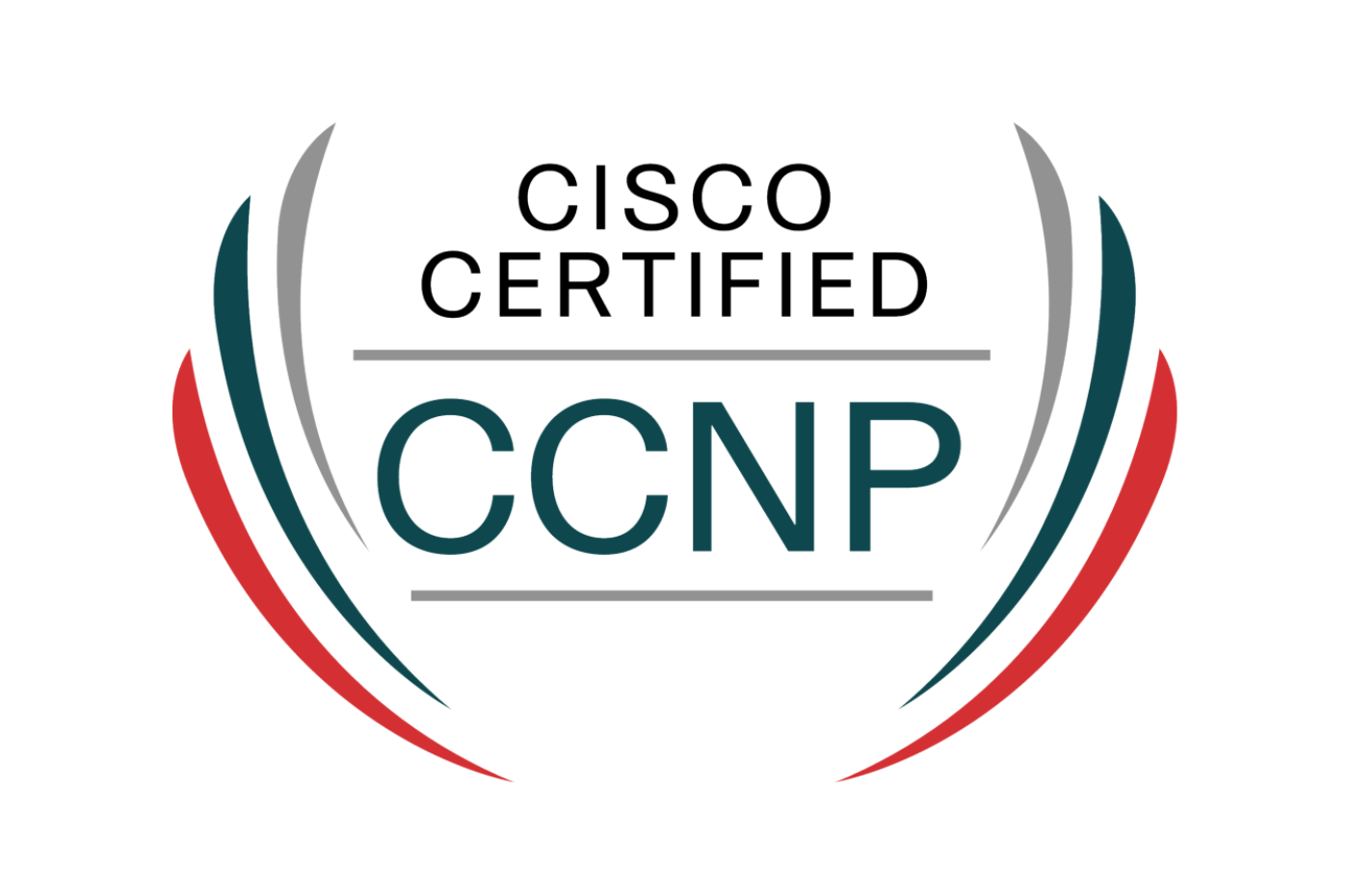Cisco Implementing and Operating Cisco Enterprise Network Core Technologies v1.2 (ENCOR )
- 40 Hours
In this course, ENCOR Cisco v1.2 you will learn how to incorporate security principles into an enterprise network and how to enhance network design using solutions like SD-Access and SD-WAN

About the course
Cisco Implementing and Operating Cisco Enterprise Network Core Technologies (ENCOR) is a course offered by Cisco Systems that provides training and certification on the technologies and principles involved in implementing and operating enterprise-level network infrastructure. The course covers a range of topics including routing, switching, network security, and network management, as well as the skills needed to design, deploy, and troubleshoot enterprise networks. The ENCOR v1.2 course is an updated version of the ENCOR course, which includes new content and updated exam objectives to reflect the latest technologies and best practices in enterprise networking. Upon completing the course and passing the associated exam, students will earn the Cisco Certified Network Professional (CCNP) Enterprise certification, demonstrating their knowledge and expertise in enterprise networking.
This course helps you prepare to take the 350-401 Implementing Cisco® Enterprise Network Core Technologies (ENCOR) exam.
Course Objectives
- Illustrate the hierarchical network design model and architecture using the access, distribution, and core layers.
- Compare and contrast the various hardware and software switching mechanisms and operation, while defi ning the TCAM and CAM, alongwith process switching, fast switching, and Cisco Express Forwarding concepts.
- Troubleshoot layer 2 connectivity using VLANs, trunking.
- Implementation of redundant switched networks using spanning tree protocol.
- Troubleshooting link aggregation using Ether channel.
- Describe the features, metrics, and path selection concepts of EIGRP.
- Implementation and optimization of OSPFv2 and OSPFv3, including adjacencies, packet types, and areas, summarization and route filtering for IPv4 and IPv6.
- Implementing EBGP interdomain routing, path selection and single and dual-homed networking.
- Implementing network redundacy using protocols like HSRP and VRRP.
- Implementing internet connectivity within Enterprise using static and dynamic NAT.
- Describe the virtualization technology of servers, switches, and the various network devices and components.
- Implementing overlay technologies like VRF, GRE, VPN and LISP.
- Describe the components and concepts of wireless networking including RF, antenna characteristics, and define the specific wireless standards.
- Describe the various wireless deployment models available, include autonomous AP deployments and cloud-based designs within the centralized Cisco WLC architecture.
- Describe wireless roaming and location services.
- Describe how APs communicate with WLCs to obtain software, configurations, and centralized management.
- Configure and verify EAP, WebAuth, and PSK wireless client authentication on a WLC.
- Troubleshoot wireless client connectivity issues using various tools available.
- Troubleshooting Enterprise networks using services like NTP, SNMP , Cisco IOS IP SLAs, NetFlow and Cisco IOS Embedded Event Manager.
- Explain the use of available network analysis and troubleshooting tools, which include show and debug commands, as well as best practices in troubleshooting.
Course Outline
- Examining Cisco Enterprise Network Architecture
- Understanding Cisco Switching Paths
- Implementing Campus Lan Connectivity
- Building Redundant Switched Topology
- Implementing Layer 2 Port Aggregation
- Understanding EIGRP
- Implementing OSPF
- Optimizing OSPF
- Exploring EBGP
- Implementing Network Redundancy
- Implementing NAT
- Understanding Virtual Private Networks And Interfaces
- Understanding Wireless Principles
- Examining Wireless Deployment Options
- Understanding Wireless Roaming And Location Services
- Examining Wireless AP Operation
- Understanding Wireless Client Authentication
- Troubleshooting Wireless Client Connectivity
- Introducing Multicast Protocols
- Introducing QoS
- Implementing Network Services
- Using Network Analysis Tools
- Implementing Infrastructure Security
- Implementing Secure Access Control
- Understanding Enterprise Network Security Architecture
- Exploring Automation and Assurance Using Cisco DNA Center
- Examining the Cisco SD-Access Solution
- Understanding the Working Principles of the Cisco SD-WAN Solution
- Understanding the Basics of Python Programming
- Introducing Network Programmability Protocols
- Introducing APIs in Cisco DNA Center and vManage
